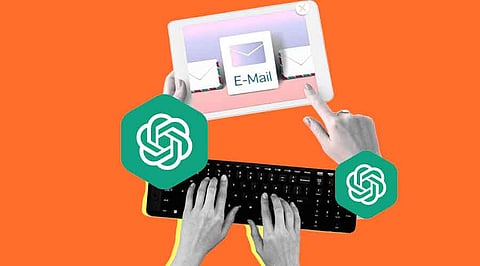

In the fast-paced world of emails, responding promptly is key to effective communication. However, the sheer volume of emails can make this a daunting task. Enter ChatGPT, an advanced language model that can be harnessed to automate email responses in Gmail. In this article, we'll guide you through the process of integrating ChatGPT with Gmail to enhance your email productivity.
To get started, you'll need access to the OpenAI GPT API. Visit the OpenAI website and sign up for an API key. Follow the documentation provided by OpenAI to understand the usage and capabilities of the ChatGPT API.
Once you have your API key, set up a developer project to manage your integration. This step may involve creating a new project on the OpenAI platform and linking it to your Gmail account.
To integrate ChatGPT with Gmail, you'll need to enable the Gmail API. Go to the Google Cloud Console, create a new project, and enable the Gmail API for that project. Generate API credentials and download the JSON file containing the client ID and client secret.
To interact with both the ChatGPT API and the Gmail API, you'll need to install the necessary libraries. Use tools like pip to install OpenAI's openai library and Google's google-api-python-client library.
In your Python script, set up authentication for both the ChatGPT API and Gmail API using the credentials obtained earlier. This involves loading the credentials from the JSON file and initializing the API clients.
Use the Gmail API to fetch incoming emails from your Gmail account. You can specify parameters such as the label, sender, or other criteria to filter the emails you want to process.
For each incoming email, extract relevant information and formulate a prompt for ChatGPT. Send this prompt to the ChatGPT API and receive the model-generated response. This response can serve as the basis for your automated email reply.
Utilize the Gmail API to send automated replies. Craft a response email incorporating the generated content from ChatGPT. Set up the necessary headers, including the recipient's email address and the email subject, and use the API to send the email.
Consider scenarios where ChatGPT might generate inaccurate or inappropriate responses. Implement checks and filters to ensure that the automated responses align with your communication standards. You may also include a mechanism to review and edit responses before sending.
By integrating ChatGPT with Gmail, you can significantly streamline your email management process. The combination of advanced language generation and automated email handling enhances efficiency, allowing you to focus on more complex tasks while maintaining timely and relevant communication. As with any automation, it's crucial to monitor and refine the system to ensure optimal performance and user satisfaction.
Join our WhatsApp Channel to get the latest news, exclusives and videos on WhatsApp
_____________
Disclaimer: Analytics Insight does not provide financial advice or guidance on cryptocurrencies and stocks. Also note that the cryptocurrencies mentioned/listed on the website could potentially be scams, i.e. designed to induce you to invest financial resources that may be lost forever and not be recoverable once investments are made. This article is provided for informational purposes and does not constitute investment advice. You are responsible for conducting your own research (DYOR) before making any investments. Read more about the financial risks involved here.
